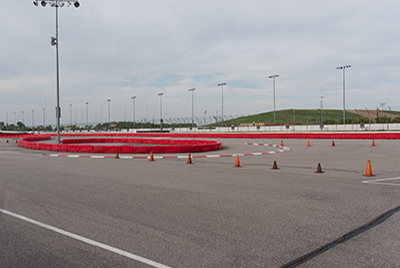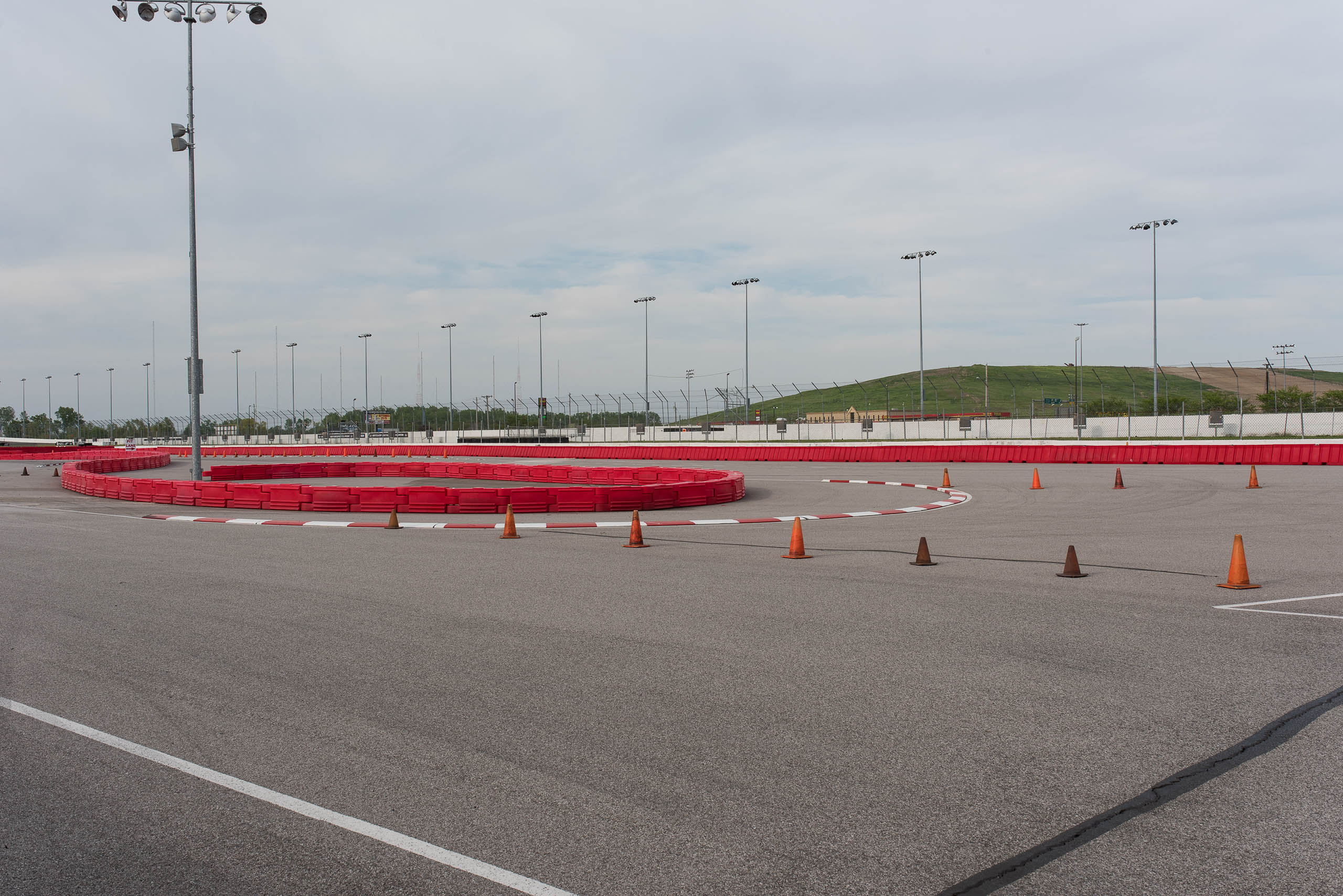



Racing culture is one of the most autochthonous cultural practices to emerge in the American Bottom in the twentieth century. From the horse races of Fairmount Park and Cahokia Downs, to the dog races of the Madison Kennel Club, to the numerous dirt-track raceways that still take advantage of the many interstitial and vacant plots throughout the region, racing (and the cut-rate economies of gambling that it spawns) remain an integral piece of bottoms identity. Perhaps no site embodies these cultural practices more than the Gateway Motorsports Park.
For nearly a century, raceways of various sorts have occupied this same plot of land. From an early dirt straight track to the first oval, this site has developed as the technologies and audience for the sport have grown. Opened in 1997, the current raceway features a 1.25-mile oval track for NASCAR and related events, and a 1.6-mile road track coiled in its interior. While the track and its monumental grandstand sit empty most of the time, in the lead-up to large race events can be seen a kind of frenzied, temporal inhabitation of space that only this sort of large, spectacular infrastructure can facilitate. Tailgating, RV-ing, and camping all spread out to the surrounding parks and parking lots in the vicinity.
To address this, in 1998 the Southwest Illinois Development Authority (SWIDA) authorized a “quick take” of 148 acres adjacent to the raceway for the construction of a parking lot. The quick take is a novel, non-adjudicated form of eminent domain—the practice of seizing private land for purported public usemdash;a power that is vested, in this case, in the authority by the state of Illinois to create economic opportunities in Madison and St. Claire Counties. However, this land seizure was immediately controversial as it effectively forced one private landowner to sell the property to another private owner for a sum dictated by the agency rather than as a market transaction. SWIDA authorized the deal for $1 million, while the original landowner argued that the land was worth $35 million—clearly an unbridgeable gap. The Institute for Justice, an activist group in Washington, DC, named this seizure one of the top 10 worst uses of eminent domain in the country, calling it a “flagrant violation of the Constitution;” SWIDA argued that “It’s a regional asset with tremendous economic impact” that would additionally increase traffic safety. Cases such as this point to the fundamental rupture in values and governance that mark relations between residents and the many industrial and commercial interests across the American Bottom.